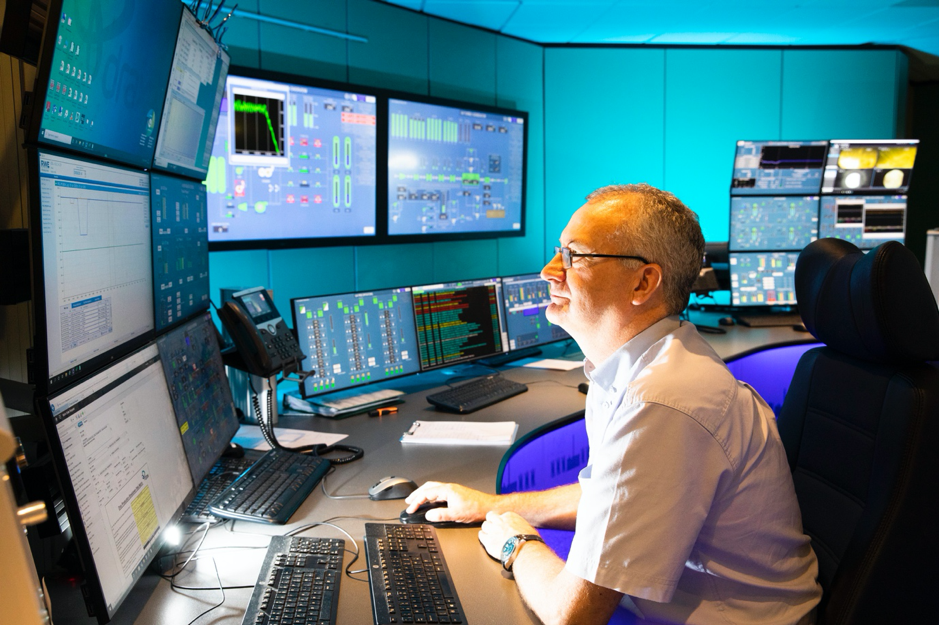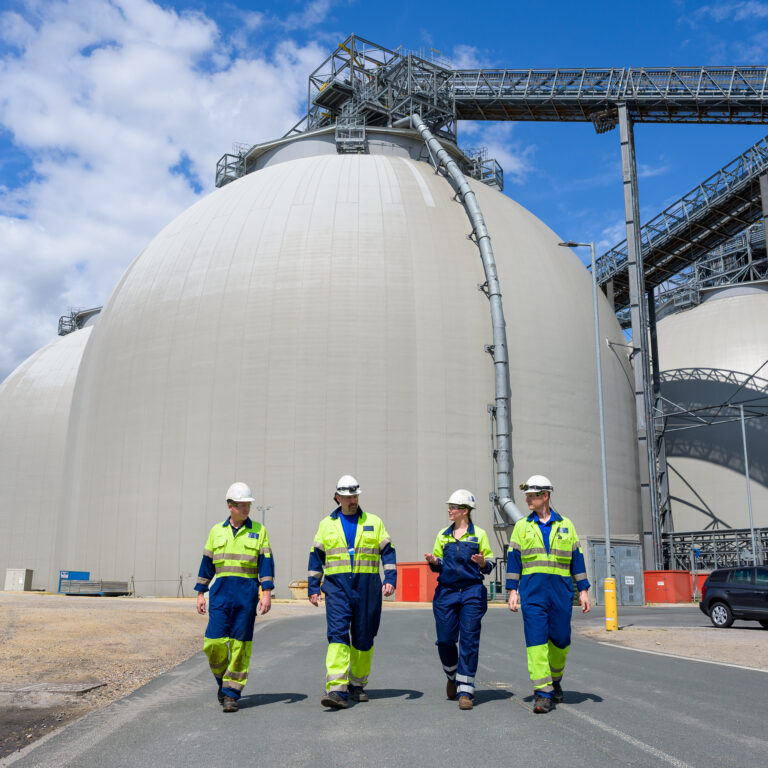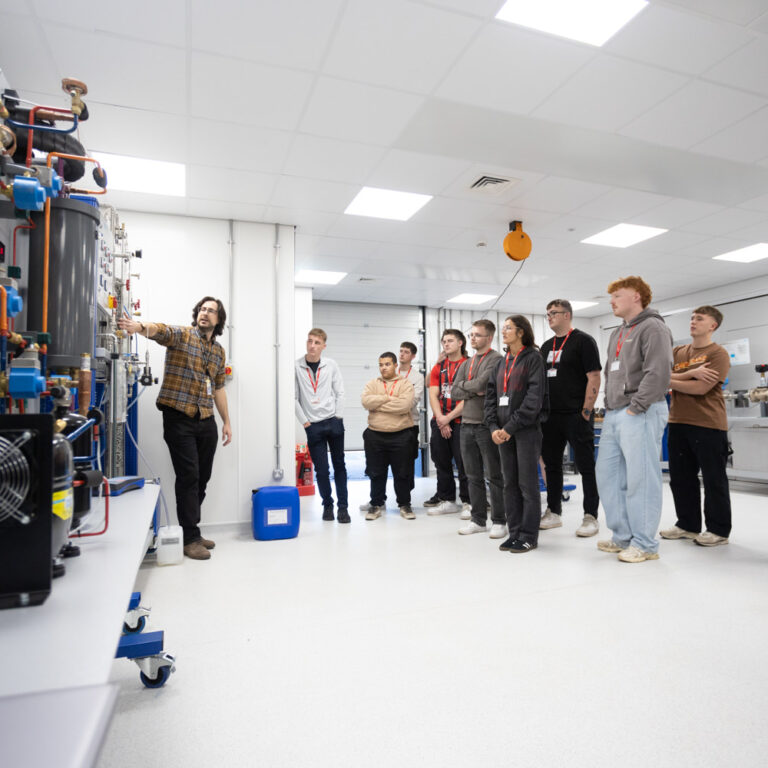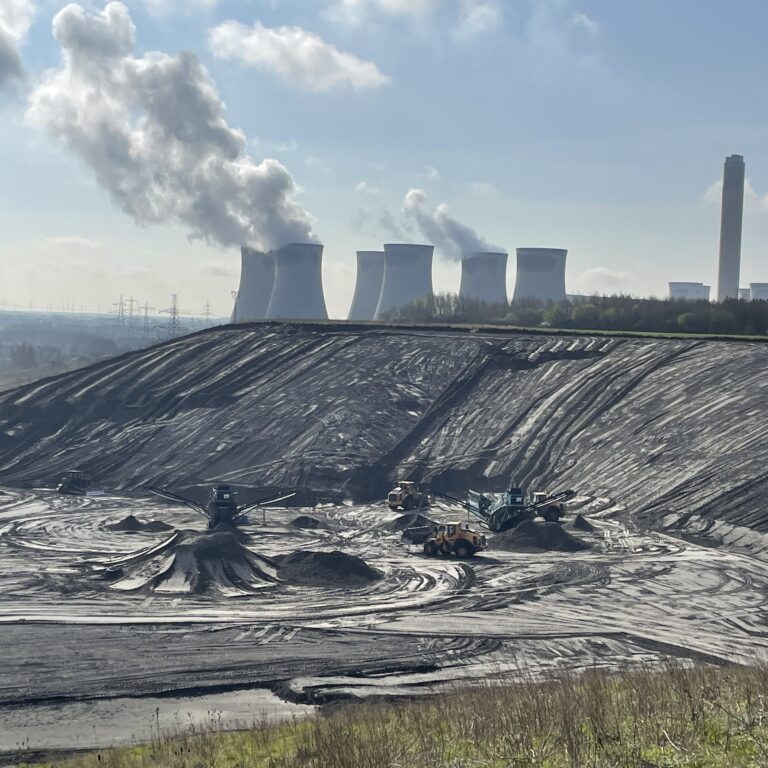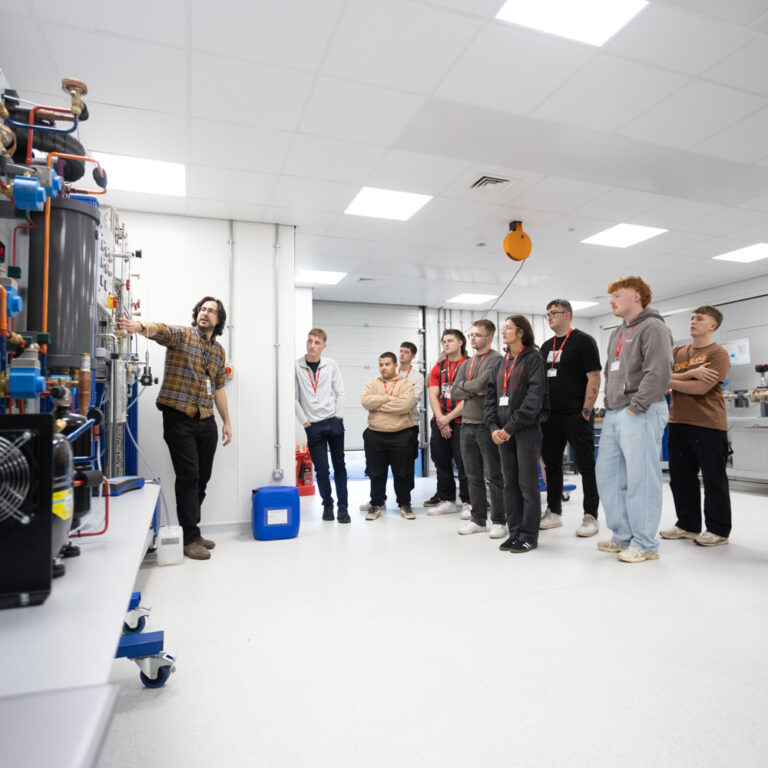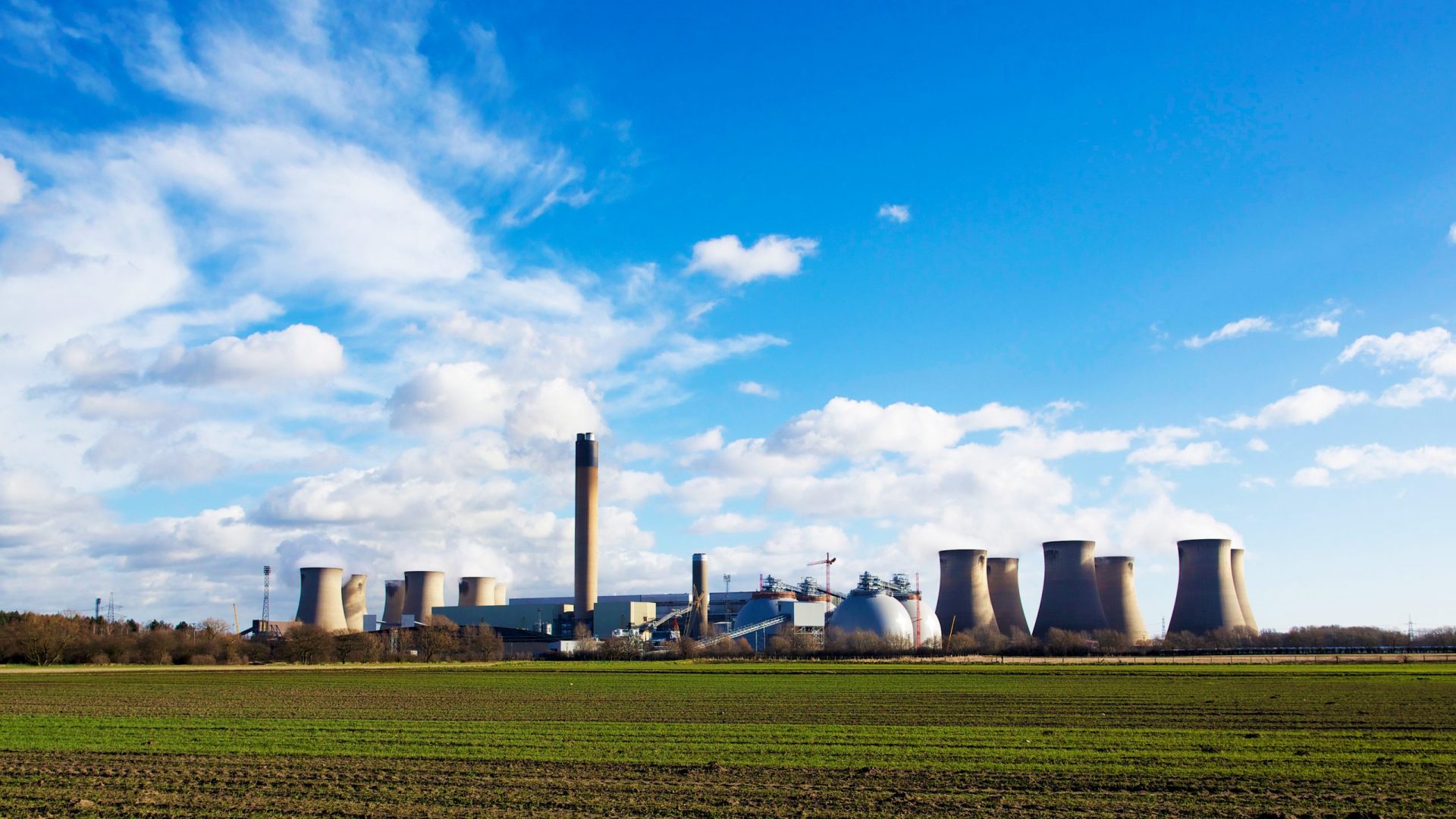
Key facts
- Drax Power Station – UK’s largest power station and source of renewables – 5% of UK power, 10% of UK renewables.
- Providing a secure, reliable and flexible source of renewable energy to support more intermittent renewables, such as wind and solar
- The site near Selby in North Yorkshire provides the most renewable power of any single location in the UK, some 14 terawatt-hours (TWh) or enough electricity to power the equivalent of five million homes
- The station includes 4 x 645MW biomass fired units and produces around 14 terawatt-hours (TWh)
- The biomass domes are each taller than Blackpool Pleasure Beach’s roller coaster ‘The Big One’ – which store up to 80,000 tonnes of biomass
- Each of the 12 cooling towers are 345 feet high (105 meters)
The UK's largest renewable power station
Drax Power Station has a long, proud history of playing a central role in producing the UK’s electricity. It is already the home of the largest decarbonisation project in Europe and is now the site of innovation for bioenergy with carbon capture and storage (BECCS), a negative emissions technology essential for fighting the climate crisis.
Drax Power Station has evolved considerably since construction began in the 1960s.
As well as being an important strategic asset nationally, able to keep the lights on in millions of homes, businesses and public sites, Drax Power Station is also vital to the regional economy with around 1,000 people employed directly at the plant and supports 3,450 jobs in Yorkshire and the Humber area.
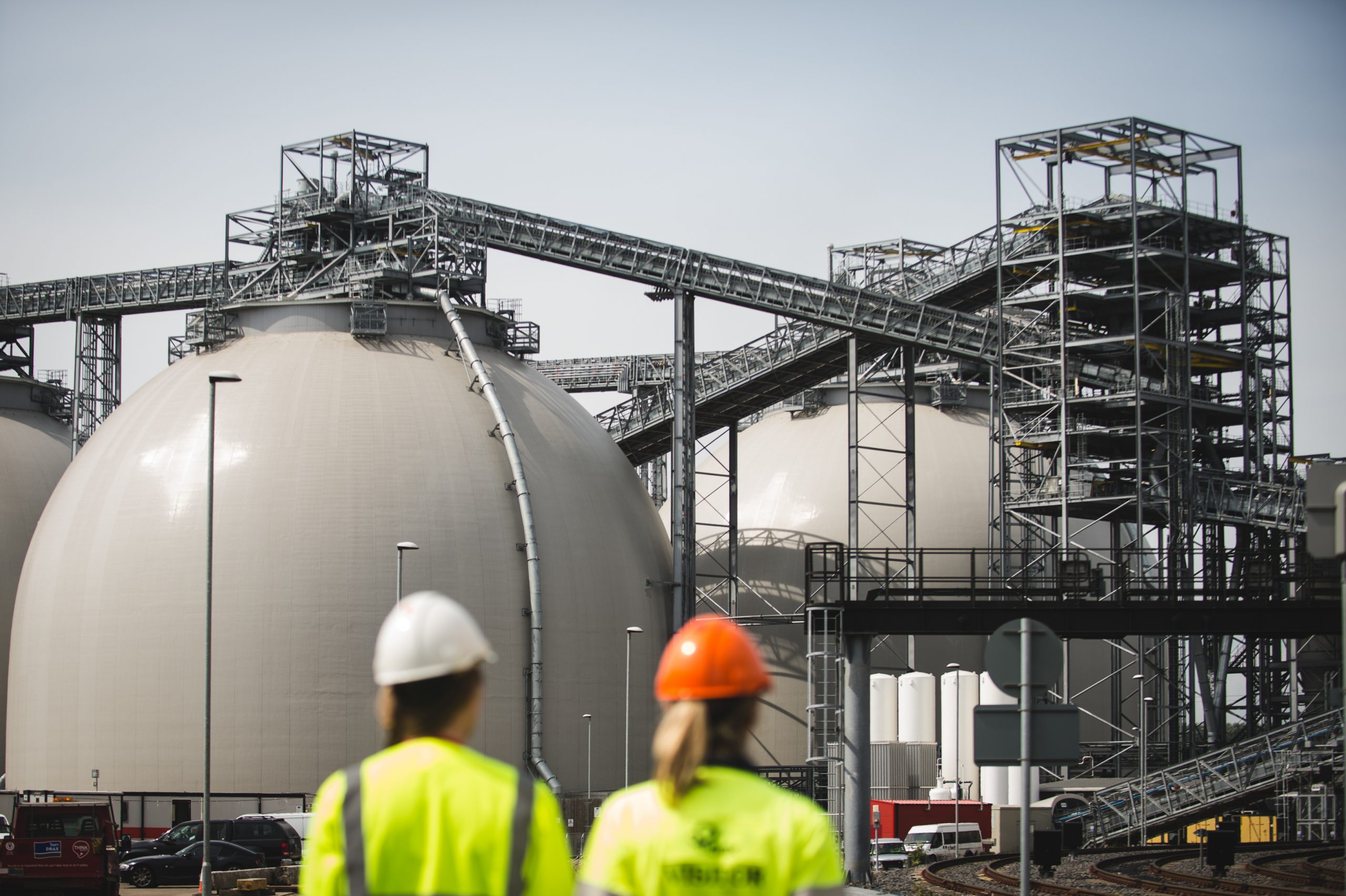
It has six boilers, four of which have now been converted to biomass. With each as high as a 15-storey office block, a main chimney almost twice the height of the London Eye, and over 1,800 miles of steel tubing, enough to stretch from John O’Groats to Land’s End and back again, you have to see it to believe it – which you can do on a free tour of the site.
The power station is connected directly to the national electricity transmission grid, for which it provides a host of system support services.
You may have seen our distinctive cooling towers on the skyline around Goole. Many observers think that the towers are pumping out smoke when it is actually water vapour which does not harm the environment. If you want to learn and see more about how the cooling towers operate watch our video exploring the inside of one.
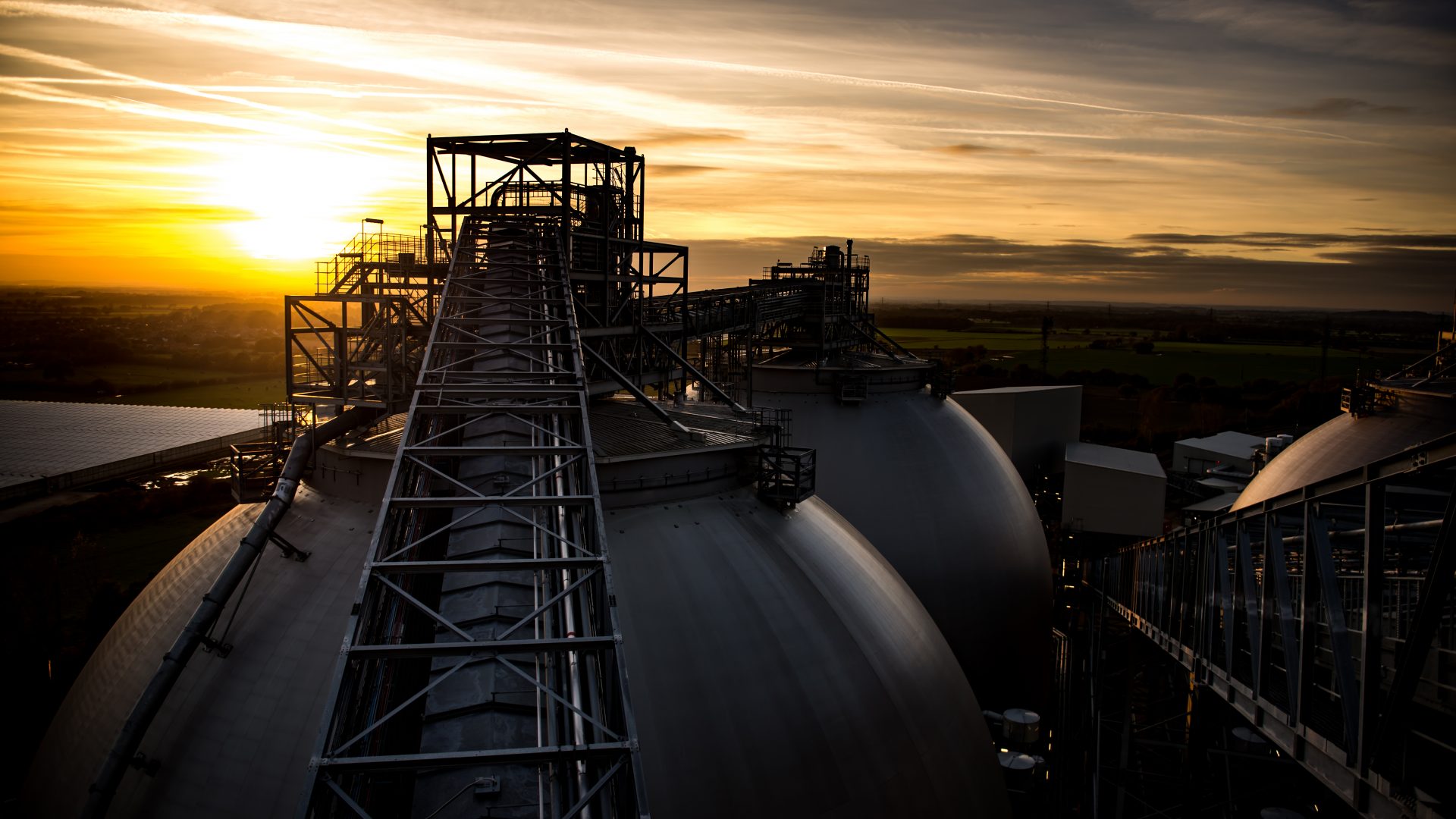
The station includes 4 x 645MW biomass fired units and the renewable power it produces is 100% using compressed wood pellets, a form of sustainably sourced biomass.
Its two coal units ceased commercial operations in March 2021 and its Capacity Market obligations were completed in September 2022.
